Forgotten bomber. DVB-102
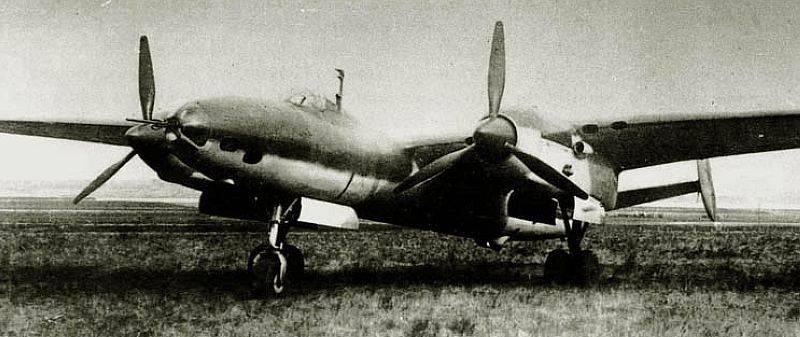
On February 17, 1942, the Soviet long-range high-altitude bomber DVB-102 took to the skies for the first time. For the Soviet aircraft industry, the aircraft was a breakthrough, but the difficult war years did not contribute in any way to the introduction of a complex aviation complex into production. The bomber project, on which the Soviet designer Vladimir Mikhailovich Myasishchev finished working in the first half of 1940, was largely undeservedly forgotten.
Bomber from "Sharashka"
In the second half of the 1930s, large-scale and ambitious aircraft building programs were implemented in the USSR. The country tried to close the gap with the leading world powers in the field aviation, primarily military. In the Soviet Union, a huge number of projects were launched to create a variety of combat aircraft - from fighters to heavy bombers. Many projects on paper had outstanding characteristics, but it was very difficult to achieve their implementation in the existing realities.
Many aircraft projects that the Soviet military expected to receive were distinguished by excessive requirements. It was often not possible to bring them to life, and all the difficulties with launching into production and creating experimental samples sometimes ended in accusations of sabotage and sabotage.
The wave of arrests that swept across the USSR in 1937-1938 thinned out the aviation industry. Among those arrested were numerous aircraft designers, directors of enterprises, as well as simple engineers and technicians. Tupolev was one of the first to be arrested, and then a number of TsAGI employees.
This fate did not bypass the outstanding Soviet aircraft designer Vladimir Myasishchev, who was arrested on January 4, 1938 and subsequently sentenced to 10 years in prison on charges of "wrecking". In addition, the designer was accused of the activities of the "anti-Soviet wrecking organization" created by Tupolev. The non-proletarian origin of the designer, who was born in the city of Efremov in the family of a merchant of the second guild, also contributed.
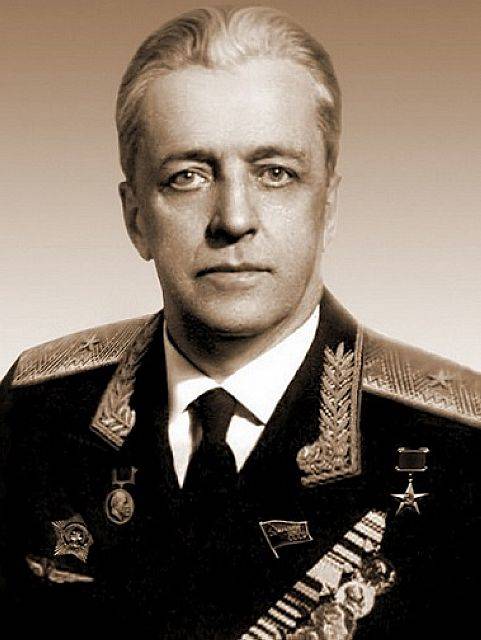
At the same time, the USSR did not want to scatter valuable design personnel. The arrested designers were attracted to work in the so-called "sharashka". So in Moscow at the end of 1938, TsKB-29 of the NKVD was formed - the second and last "Experimental Design Bureau" in the aviation industry. Among the workers were previously arrested aircraft designers and aviation engineers.
The composition of TsKB-29 consisted of four brigades, which were headed by prominent Soviet designers who had previously been arrested under Article 58 of the Criminal Code of the RSFSR. Among them were Vladimir Petlyakov, Vladimir Myasishchev, Andrey Tupolev, Dmitry Tomashevich. As part of their work at TsKB-29, aircraft designers carried out government assignments to develop new aircraft for the needs of the Red Army Air Force.
While in the "sharashka", Vladimir Myasishchev worked on creating his own version of the VI-100 high-altitude fighter. Also, it was in conclusion that the designer continued to work on the project of the long-range high-altitude bomber DVB-102, which was planned to be equipped with powerful M-120 engines. Many promising and bold design solutions were used in the aircraft. Work on the aircraft continued after the release of the designer, which took place on July 25, 1940 (rehabilitated only in 1955).
What features did the DVB-102 have?
It is believed that the first work on the project of a new bomber could have begun as early as the end of 1936 at plant number 84 in Khimki. They were carried out under the direct supervision of designer Vladimir Myasishchev, who believed that the new aircraft would be useful for the Red Army Air Force in an unstable world situation. At the same time, Vladimir Mikhailovich considered the flight data of the already existing bomber DB-3 Ilyushin unsatisfactory.
Myasishchev continued work on the aircraft already in custody. The bomber got its name from the number of brigade No. 102, which was led by an aircraft designer. The country's leadership became interested in this project, including the creation of a high-altitude long-range bomber in the plan for the pilot construction of the NKAP for 1940, at the same time the project received state funding. The creation of a high-altitude version of the bomber was due, among other things, to a decrease in the vulnerability of the aircraft to enemy air defense systems.
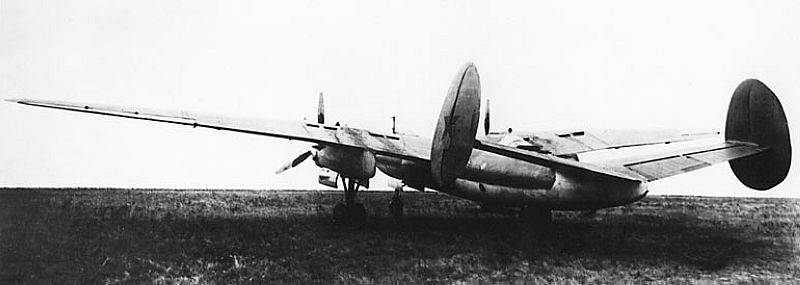
The twin-engine high-altitude bomber for the USSR was a truly breakthrough project, which had a number of features that equalized it with the best foreign developments. Unlike previous bomber projects, the DVB-102 was supposed to receive a pressurized cabin. Before the start of the war, a number of pressurized cabin designs were developed in the Soviet Union, but they were all built on the principle of regeneration, like on submarines.
Myasishchev, on the other hand, proposed installing a much more advanced pressurized ventilation-type cabin on the new bomber, it was these pressurized cabins that provided the best conditions for flying at high altitude. At the same time, there should have been two pressurized cabins on the plane. One - for the pilot and navigator, the second - for the shooters (one of them is a radio operator). This decision led to savings in the total sealed volume, as well as in weight.
Between the two pressurized cabins, it was planned to place a capacious bomb bay, designed for two tons of bombs of various calibers (from 50 to 2 kg). Defensive weapons were planned varied. Initially, these were supposed to be ShKAS machine guns and large-caliber UB (four in total). Already during the tests, the weapons were strengthened. In the bow mount, the ShKAS was replaced with a 000-mm ShVAK automatic cannon, and in the lower remote mount, the ShKAS was replaced with a 20-mm BS machine gun.
The externally developed high-altitude bomber was a cantilever high-wing aircraft built according to the classical aerodynamic design with clean aerodynamic contours. A distinctive feature of the model was a two-keel spaced vertical tail. Its purpose was to improve the control of the bomber, in the future Myasishchev will repeatedly refer to such a scheme.
The chassis of a bomber with a nose strut was also unusual for the USSR. By 1939, there was only one such aircraft in the country - the Tolstoy tricycle flying laboratory. At the same time, only test pilots who were directly connected with the flying laboratory had experience in flying aircraft with such a chassis.
This seemingly ordinary decision was actually very important. The tricycle landing gear with front strut was more stable when driving on the runway at all speeds. At the same time, such a landing gear was more comfortable on taxiing and provided the pilot with a better view. Also, during acceleration, less aerodynamic resistance was guaranteed, which reduced the takeoff.
The engines, which have become a real stumbling block for designers, also deserve a separate word. The preliminary design of the bomber was approved with water-cooled engines M-120TK, which received turbochargers. These were powerful Y-shaped 18-cylinder engines, the development of which was carried out in Klimov's KB-26. The takeoff power of the engines was 1 hp. from. At an altitude of 850 meters, they were supposed to provide a power of 9 liters. from.
Why did the DVB-102 never go into production?
The Great Patriotic War played its role in the fate of the DVB-102 bomber, which slowed down the construction of a prototype aircraft. The evacuation of TsKB-1941 that followed already in July 29 also did not contribute to the speedy completion of the construction of a high-altitude bomber. As a result, the aircraft was ready only at the beginning of 1942. The plane was built already in evacuation in the suburbs of Omsk at plant number 288.
The first flight of the long-range high-altitude bomber DVB-102 took place a little over 80 years ago - on February 17, 1942. Lifted the car into the sky test pilot Valery Zhdanov. In the very first flight, he noted the unstable operation of the M-120TK engines. The problem with the engines became the main one. If the view from the cockpit of the pilot and navigator could be improved, the bomb bay could be redone, then it was not possible to obtain the required engines with the necessary characteristics.
In the available version, the M-120TK engine could not provide the specified technical characteristics. With these engines, the bomber could rise to a height of no more than 8 meters, and the maximum speed did not exceed 300 km / h. The value was higher than the speed of most existing long-range bombers, which was separately noted in the test report. At the same time, according to the requirements of the state task, the speed should have been even higher.
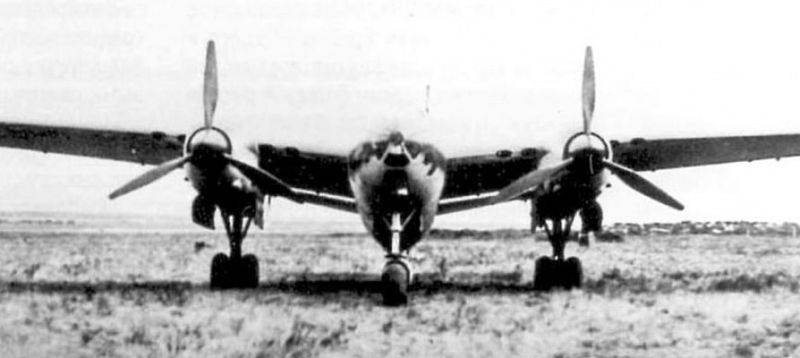
Trying to fix this, in 1943 they decided to install more powerful engines, the M71, on the plane. With new engines, the bomber flew from Omsk back to Moscow. In the capital, the plane was subjected to fine-tuning, in particular, a new pressurized cabin was installed. In parallel with this process, by the beginning of 1944, another DVB-102 prototype was ready, on which it was planned to install new ASh-72 engines.
With the new engines, the bomber managed to gain a height of 10 meters, and the maximum speed increased to 500 km/h. But simultaneously with the achievement of the required parameters, new problems appeared that needed to be addressed. On the other hand, it was much more difficult to bring a promising aircraft with high flight data to mass production in wartime. The industry did not need experiments, it was necessary to produce certain models of combat vehicles already brought to mind in planned volumes.
Under these conditions, the process of creating the DVB-102 aircraft continued until the summer of 1945. The end of the war made the subject of aircraft of this type irrelevant. In turn, the design idea shifted in favor of the creation of four-engine extended-range bombers, sending the DVB-102 bomber project to the shelf. stories.
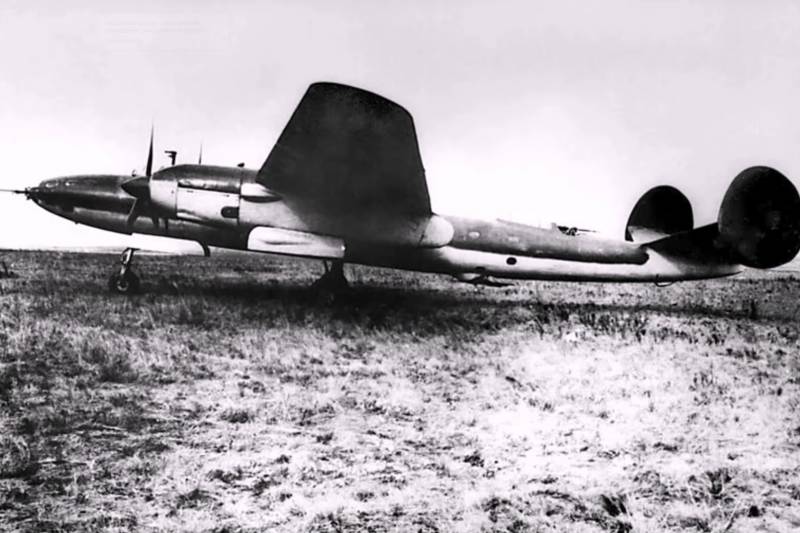
Information